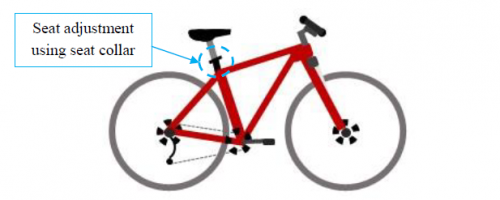If you would like to see more information on this case study, click here!
You can request this case study and a WCDE staff member will get back to you.
Mountain biking has become increasingly popular over the past three decades. To date, this extreme sport has brought athletes to compete on Mount Everest and tackle demanding races through the Rockies. Mountain bikers ride over rough terrain; therefore, the user needs proper equipment to ride successfully and remain safe. One focus is the position of the seat. The rider benefits from a higher seat when ascending in order to achieve maximum power but needs a lower seat when descending to increase maneuverability. Currently, most mountain bikes are equipped with manual seat adjustment systems in the form of a quick-release seat collar. The seat collar requires the user to dismount their bicycle to make a height adjustment, which is a tedious task on varying terrain. Mountain bikes with remotely adjustable seat posts, which do not require the user to dismount, are already available and are typically comprised of a hydraulic system, a pneumatic system or a spring-pin system. However, all three designs have several limitations. For example, the user needs to place a downwards force on the seat to adjust the height, which may result in a loss of a balance and increased safety risk. There is a need in today’s competitive mountain bike industry for an ergonomically-designed remotely adjustable seat post.
A design team of mechanical engineering students, Derek Golub, Michael Sullivan, Ryan Blommers, and Tseng-Mau Yang, decided to focus their capstone project on the design of a better alternative for a seat post adjustment system under the supervision of Professors Oscar Nespoli and John Medley.
 Typical mountain bike design with a seat collar
Typical mountain bike design with a seat collar
The expected learning outcomes of this case study are for students to gain a more in-depth understanding of the design process and to be able to apply the elements of the design process to a real life situation.
If you would like to see more information on this case study, click here!
You can request this case study and a WCDE staff member will get back to you.
Contact Waterloo Cases in Design Engineering
Steve Lambert
Tel: (519) 888-4728
Email: steve@uwaterloo.ca
The University of Waterloo acknowledges that much of our work takes place on the traditional territory of the Neutral, Anishinaabeg, and Haudenosaunee peoples. Our main campus is situated on the Haldimand Tract, the land granted to the Six Nations that includes six miles on each side of the Grand River. Our active work toward reconciliation takes place across our campuses through research, learning, teaching, and community building, and is co-ordinated within the Office of Indigenous Relations.